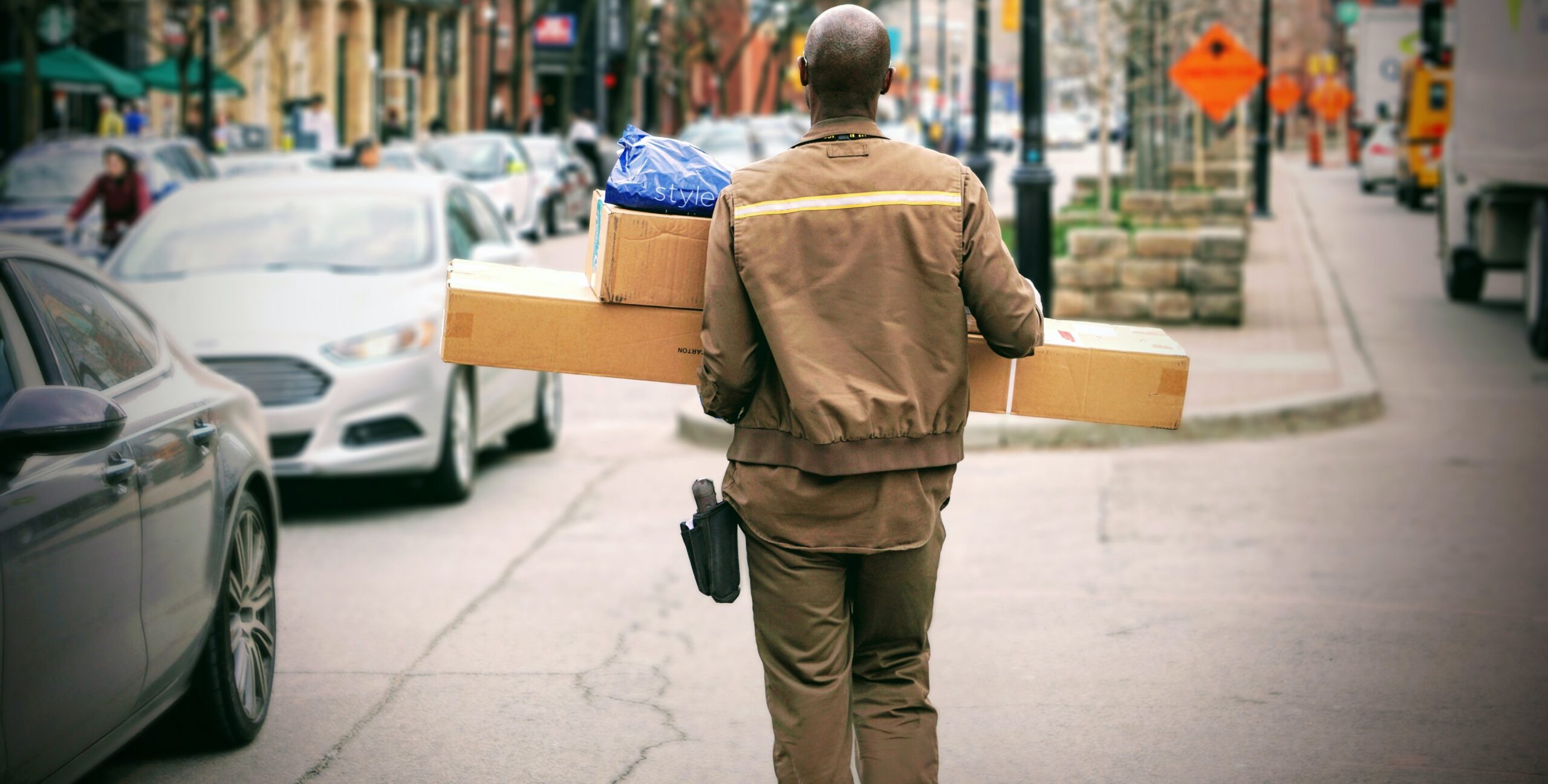If you were shipping a small item, such as a book, you wouldn’t think too hard about it. Just toss it in a box, tape it up, and take it to the post office. But what if you need to ship a mattress or a heavy piece of artwork? All you need are the right materials and the right information to learn how to ship large items.
What’s considered a large item when shipping?
If the item you’re trying to ship easily fits in an average box, then it’s probably not considered a large item. Large items, sometimes referred to as oversized, can’t fit in average packaging because of their weight or size. They’re typically over 70 pounds and a couple of feet in size. Some examples of large items you may need to ship are mattresses, office furniture or artwork. If you’re moving, you may need to ship multiple large items.
What’s the difference between oversized and freight shipping?
When thinking about shipping large items, it’s important to note the difference between oversized packages and freight items. Freight items are those too large for traditional parcel shipping, meaning they can’t be delivered on a typical UPS or U.S. Postal Service delivery route. Special packaging and shipping requirements apply.
Freight items are typically over 150 pounds, though the weight threshold may vary between shipping providers. Items like cars, pallets of products or oversized furniture may be considered freight items.
Oversized packages can ship via standard routes and methods, but they may be assessed with a large or oversized item fee. These items are not as heavy or large as freight items, so the process for shipping them is a bit different.
6 steps for shipping large items
Shipping large items may be a bit harder than smaller packages, but it’s not as difficult as it may seem. Here’s how to ship large items, such as art, furniture and tech, in six easy steps.
Step 1: Gather the right packing materials
First, you’ll need to identify and gather the appropriate packing materials. The right packing materials are crucial for ensuring that your package can be easily handled during shipping. They protect your contents from damage, and enable sorting centers and drivers to quickly ascertain where the package is headed. Here are some of the materials you’ll need:
- Heavy duty boxes: Not all boxes are made the same. Look for five-ply corrugated fiberboard boxes. These are the strongest type of cardboard boxes, and thus will hold up better while shipping larger and heavier items.
- Strong packing tape: Heavy-duty boxes are sealed and reinforced with heavy-duty tape. Avoid regular masking tape and duct tape because they aren’t nearly as strong as heavy-duty options.
- Cushioning: To ensure your item arrives at its destination unharmed, you’ll need to fill the box with cushioning. This material provides package protection and ensures it doesn’t move around during shipment. Cushioning includes packing peanuts, foam sheets, bubble wrap, inflatable bubble sheets, foam structures and cardboard pieces. Whichever cushioning you choose, make sure it prevents the item from shifting and sustaining damage during transport.
Step 2: Pack everything carefully and correctly
Once you’ve gathered the packing materials, prepare your items for transport following these five steps:
- First, build the box. Use packing tape to reinforce the bottom by placing multiple pieces along the seam and across the width of the box.
- Add your first layer of cushioning. Depending on the type of item, you’ll want to arrange the cushioning to support the item or add a layer of cushioning between the bottom of the box and the item.
- Place the item in the box. Lay it in a way to limit movement.
- Add additional cushioning around the item, providing support between the wall of the box and the item. Keep adding it until you’re sure the item won’t move and break during shipment.
- Close the box and seal it with more tape. Tape across the top seam and the width of the top of the box, similar to how you did the bottom. Taping around the box can also add additional support for heavy items.
Step 3: Get the weight and dimensions in advance
Once your item is packaged, get the weight and dimensions. Knowing these sizes and weights will help you determine the shipping methods available to you. This action keeps you from taking it to a shipping facility and finding out it’s too large or heavy. With the dimensions in mind, research which carriers will ship it, where you need to take it and how much it’ll cost. Shipping large items can get expensive, and you want to be prepared for that price.
Step 4: Consider shipping distance
Think about where you’re sending the package, as that will help you determine the best method of shipment. Is it going across the state? To a different state? Or will it need to go overseas to another country? Taking distance into consideration will help you narrow down your options.
Step 5: Decide on the shipping method
Carriers like UPS and FedEx regularly ship large items, but many logistics companies will ship single packages or less-than-truckload (LTL) freight. They offer a variety of services, including expedited and standard shipping, and international deliveries. Find the best for you and then decide how to get it to your carrier.
Step 6: Schedule a pickup or drop off the package
The final step is getting your package to the carrier. Many carriers such as UPS and FedEx have stores around the country where you can take your item and pay for it there. However, if your item is too heavy to carry, can’t fit in your vehicle or you don’t have a store near you, you can schedule a pickup by calling them. They’ll come to your home or business to pick up the item and send it on its way.
Issues when shipping large items
Many problems can occur when shipping large items, and it’s best to know about them ahead of time to mitigate the risk of it happening to you. First, it may take longer to deliver large items than smaller items. Plan ahead to make sure your item arrives when it needs to. Large item shipping is also going to be more expensive, so prepare for a higher cost. The fewer constraints you have on delivery time, the cheaper it’ll be.
Large items are also easily damaged in transit. Because they’re typically unwieldy and harder to handle, they’re dropped more frequently. Use plenty of cushioning to prevent shifting. The more support it has, the less likely it is to break.
Safely and easily ship your large items
Shipping large items isn’t as easy as dropping a package off at the post office, but it’s not impossible either. Ensure you have the right materials to keep your item safe and research the options available to you. You’ll be able to get your package to its destination in no time. All you need to do is be prepared.
FAQ
The cheapest way to ship large items is through a carrier like FedEx or UPS.
Dimensional weight is the amount of space a package takes up whereas weight is how much the item itself weighs.
To find dimensional weight, multiply the height, width and length. Then divide that number by 139. The divisor number (DIM) is set by the major freight carriers, such as UPS and FedEx.
Sign up for a FreightWaves e-newsletter to stay informed of all news and trends impacting supply chain careers and operations.


